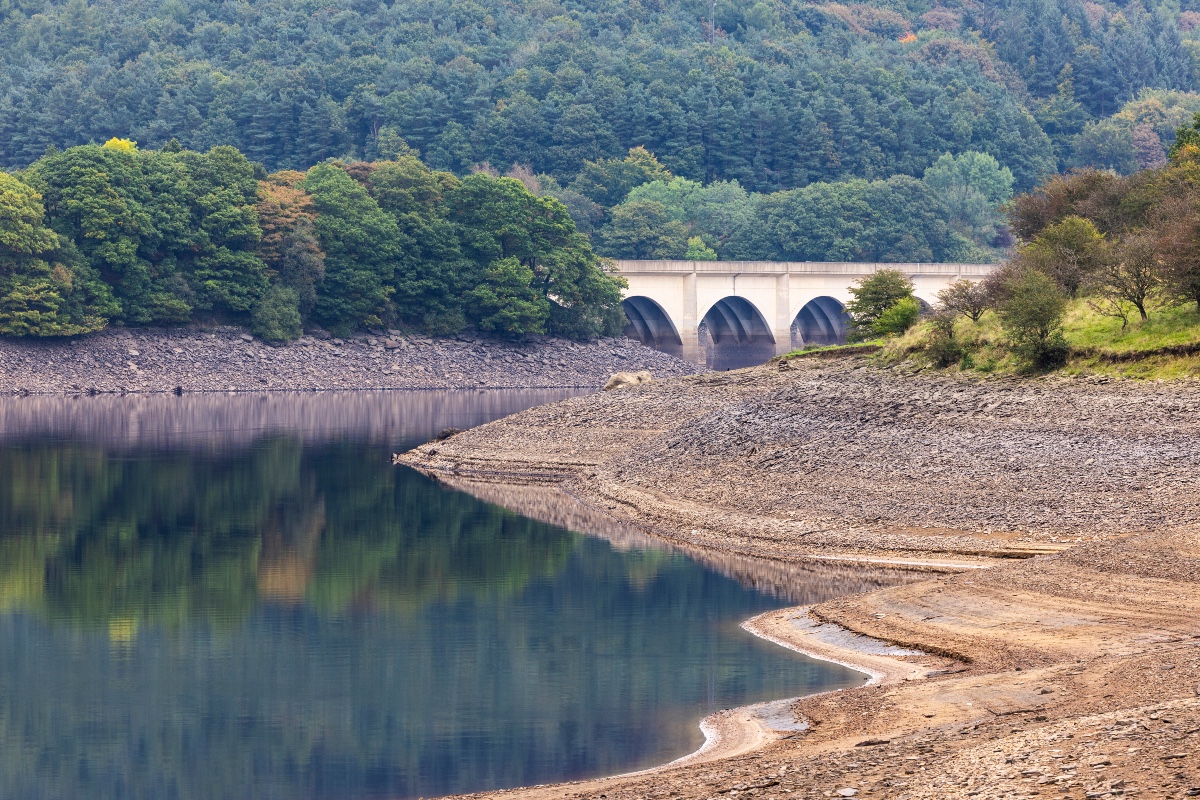Rachel Bratt, Senior Consultant for Climate Risk at EcoAct (part of Schneider Electric), argues that hidden water stress is fast becoming the gating factor for digital infrastructure growth, as she explains
AI may be intangible, but its infrastructure is anything but. Behind every AI-generated response or data insight lies a network of hyperscale data centres. These are massive physical assets that consume enormous amounts of electricity and water. As demand for AI skyrockets, so too does the strain on local water systems that sustain and cool these super machines.
Water risk, long the undercurrent in sustainability conversations, is moving to the forefront. This is especially apparent in companies scaling digital capabilities or reliant on always-on operations. From server rooms in drought-prone regions to co-location sites vulnerable to grid instability, the age of AI is also the age of water stress.
The cost of water hides its risk
One of the main factors that has obscured water risk is that it is often underpriced. Many corporate systems record it as a utility cost, not as a variable that could materially disrupt operations – a misclassification that renders water risk effectively invisible in most budgeting, procurement and risk management processes.
Most organisations measure what they use directly. However, very few consider how much water is required to power their servers, process their inputs, or keep their suppliers operating. Even fewer understand what happens if that water changes in quality: if it arrives hotter, more saline, or more contaminated. These shifts can impair equipment, force shutdowns and degrade processing environments, yet are not reflected in conventional risk models.
Nowhere is this blind spot more obvious than digital infrastructure. A single 1MW data centre can use over 25 million litres of water annually, and as AI adoption accelerates, global water withdrawal for AI workloads is expected to reach 1.7 trillion gallons per annum by 2027 – more than four times Denmark’s annual consumption. Yet despite this trajectory, water remains largely absent in boardroom agendas – a risk that could quickly undermine the very systems driving future growth.
Water risk, investment and profit
In some sectors, water stress is increasingly a gating factor in operational expansion. For example, data centre site selection increasingly accounts for water availability. Industrial planning must factor in drought risk and public opposition to water abstraction. Infrastructure approvals are tightening. Access to permits is becoming contingent on showing credible water management strategies. Investment decisions are being challenged by regulators and communities based on long-term water availability.
In high stakes digital environments, even a few hours of downtime due to water shortages or cooling disruptions can have enormous consequences – from data loss and productivity hits to customer complaints and contractual penalties.
The financial signals are flashing. Even if global temperature increases are limited to 1.5°C above pre-industrial levels, 31% of global GDP ($70 trillion) will be exposed to high water-stress. The business case for action is no longer hypothetical. It is a question of when water stress affects your operations, not if.
Even if water stress is not financially material to a business’ operations, there are reputational and regulatory risks associated with water stress. Disclosure expectations are shifting from general ESG statements to site-specific, model-backed risk data. Frameworks such as TNFD and SBTN are accelerating uptake of watershed-level assessment. Mandates from CSRD and CDP are pushing companies to demonstrate scenario resilience and transparent risk governance. This shift is raising the bar from awareness to accountability.
The hidden water cost of energy and AI
Effective water risk assessment requires more than tracking consumption. It demands an understanding of two dimensions: physical exposure and operational vulnerability.
Exposure is shaped by geography and climate. It reflects where assets are located, how stressed those water systems are today, and how climate modelling suggests that will change over time. Vulnerability depends on the role water plays in an operation, whether a site can continue without it, how infrastructure is configured, and whether alternatives or mitigation options exist.
AI adoption adds new complexity. Most companies chasing digital transformation have not recalibrated for the water intensity of modern workloads. Without access to resilient water supply and effective wastewater strategies, high-performance computing becomes a liability.
Every watt consumed by an AI server must be generated, transmitted and cooled, often through water-intensive systems. And yet traditional water metrics barely register this dependency. A business may feel secure because it lacks physical production sites, but if its data centre sits atop a strained aquifer or relies on a fragile cooling loop, its exposure remains high.
Many metrics focus solely on volume, ignoring seasonality, contamination or the risk of infrastructure failure. New modelling tools including satellite imaging, sub-basin climate models, and catchment-level forecasting are offering more granular views of exposure. These tools offer a level of insight that has not previously been available, although uptake has been slow.
Where companies get it wrong and what CXOs can do now
Getting ahead of water risk means taking proactive, measurable steps before disruption hits. The gap between perception and reality is growing. The companies that catch up first will have more room to act. The ones that wait may have fewer options and higher costs.
For leaders seeking to strengthen organisational resilience, several steps can help translate awareness into action:
1. Map localised exposure across operations and supply chains
Focus on high-stress geographies and functions with elevated dependency, such as cooling, processing, and cleaning. Go beyond direct consumption, assess where your operations, particularly digital infrastructure, rely on water intensive services. Use water footprinting and catchment-level analysis to understand context and risk concentration
2. Integrate water into enterprise risk and investment planning
Embed water risk in ERM, business continuity and CapEx decisions. Model how stress could affect asset viability or sourcing flexibility.
3. Adopt risk-based performance KPIs
Track metrics like reuse ratios, withdrawal intensity in stressed areas, discharge quality, and adaptation costs – not just total usage.
4. Understand upstream and downstream exposure
Your vulnerability may sit with your suppliers, infrastructure hosts or logistics partners. Engage them early.
5. Collaborate at the watershed level
Water resilience requires collaboration. Companies can work with peers, local governments, and civil society to co-develop adaptive strategies and invest in basin-wide stewardship.
Reframing water: from compliance issue to strategic lever
Water sits at the intersection of environmental risk and financial exposure. It affects operational continuity, long-term asset value, and the ability to grow in a resource-constrained world. For AI-native businesses, it’s no longer just a climate consideration but a critical infrastructure dependency.
The cost of inaction is rising. In a world of constrained supply and rising expectations, leadership teams that embed water risk into core planning today will be far better positioned to navigate tomorrow’s shocks. In sustainability, we often talk about materiality. With water, the materiality is no longer in question.
The only question is whether business leaders will respond, not just in policy but in practice.


